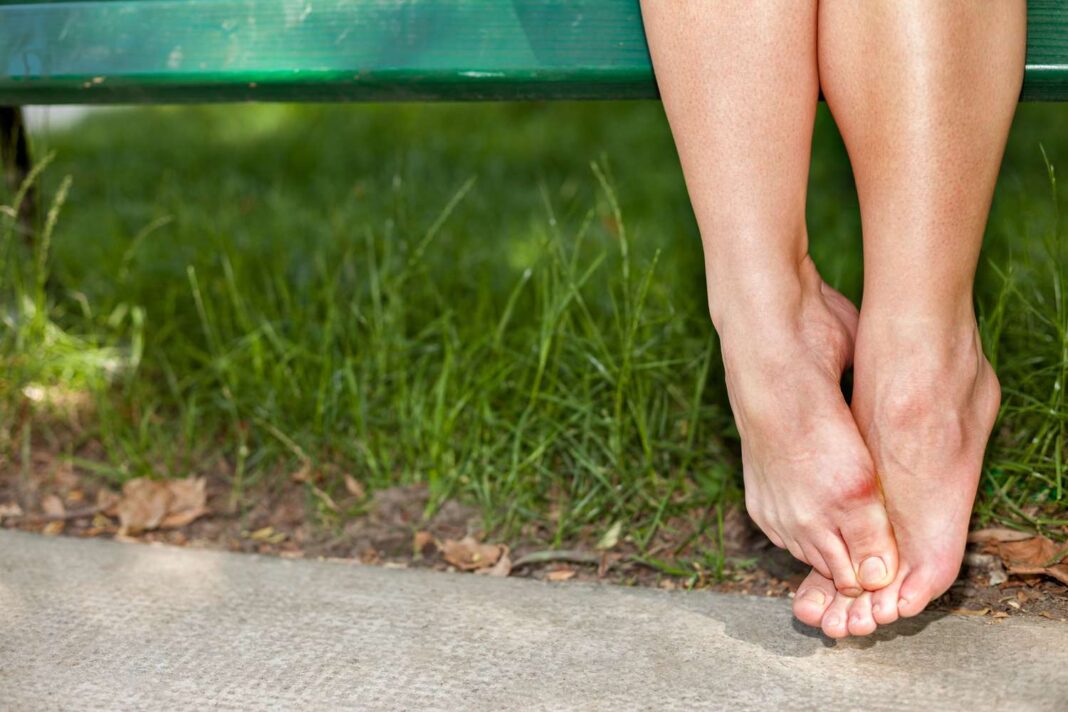Do Natural Home Remedies Work?
Whether and how a natural remedy will work for a fungal nail infection can depend on several factors, including the type of infection and how much area is affected. They also can include other risk factors, such as:
- Age, with most infections occurring after age 60
- Smoking history (smokers may be at greater risk)
- How long the exposure has been
- Any history of a traumatic injury
- An underlying history of certain health conditions, including obesity
- The potential for drug interactions
Fungal Infections are Not All the Same
Fungal infections are not all the same. The most common type, called distal lateral subungual, typically affects the first or fifth toe and may be easier to treat.
Total Dystrophic Infection
Total dystrophic infection is a destructive, advanced damage to the nail associated with immune system compromise. A healthcare provider may be needed to diagnose and treat both the infection and the underlying cause.
Natural Remedies for Fungal Nail Infections
- Tea Tree Oil
In lab studies, tea tree oil has been shown to stop the growth of two fungi that are responsible for the majority of onychomycosis infections: Trichophyton rubrum and Trichophyton mentagrophytes.
- Menthol Camphor Oil
Some small studies suggest that menthol-camphor ointments like Vicks VapoRub have antifungal properties. They act on the dermatophytes common to fungal nail infection as well as Candida species (yeast).
- Propolis Extract
Propolis extract, a mixture of plant resins and beeswax, has been studied for its potential to treat fungal infections. The phenol gingerone and the terpene curcumin have been shown to have antifungal properties.
- Ginger Essential Oil
Ginger essential oil contains considerable amounts of beneficial phytochemicals. The essential oil is safe to apply to the skin and nails, but should always be diluted with a carrier oil first and tested on a small area of skin.
- Green Tea
Green tea leaves contain a high concentration of phenols with beneficial antifungal properties. Green tea extract has been tested against the fungus Candida albicans and shown to significantly reduce colonies of this fungus in lab tests.
- Neem Oil
Lab researchers who tested neem extract against six fungi, including Candida albicans, found it to inhibit the growth of all of them. Neem oil is gentle and generally well-tolerated, so it does not need to be diluted with a carrier oil before applying it to the skin or nails.
- Garlic Cloves
Garlic has significant antifungal effects and boasts an array of fungus-fighting phytochemicals, including sterols, flavonoids, and phenols, some of which also contain anti-inflammatory properties. Garlic cloves and essential oil can be applied topically to a fungal infection, but like other essential oils, it should be diluted with a carrier oil first.
- Henna
Research shows that henna leaves may be particularly beneficial in the fight against the fungus Trichophyton rubrum, which is the most frequent cause of onychomycosis worldwide. The research is so promising that some researchers believe using henna leaves to treat fungal infections, instead of antifungal drugs, could help reduce the risk of antifungal drug resistance.
- Aloe Vera
Aloe vera gel comes from the plant’s leaves. The gel itself is rich with an array of phytochemicals, including saponins, vitamins, and minerals, sterols, and flavonoids, that can help fight fungal infections and soothe inflammation. Applying aloe vera gel to a nail infected with Candida albicans or another fungus may stop the infection from growing, but more research in humans is needed.
- Clove Oil
One study published in the journal Molecules found that clove oil was effective for treating onychomycosis caused by Candida albicans in people with compromised immune systems due to cancer. This is due to the antifungal properties of clove oil.
- Apple Cider Vinegar
Proponents of apple cider vinegar suggest that acetic acid (a substance found in many types of vinegar) can destroy the fungi that cause nail fungal infections. One study showed that wearing a sock soaked with 1/2 apple cider vinegar and 1/2 water can increase the effectiveness of topical antifungal medication, but there is no evidence that apple cider vinegar by itself is effective.
Conclusion
Onychomycosis refers to a fungal infection of the nail. Since ancient times, numerous natural remedies have been used to treat onychomycosis, including henna and ginger. To this day, natural remedies like clove oil and garlic oil remain the preferred treatment for onychomycosis in many parts of the world, as they are gentler and more accessible than antifungal medications.
Frequently Asked Questions
- What is onychomycosis?
Onychomycosis is a fungal infection of the nail. - What are some natural remedies for onychomycosis?
Some natural remedies for onychomycosis include tea tree oil, menthol-camphor oil, propolis extract, ginger essential oil, green tea, neem oil, garlic cloves, henna, aloe vera, and clove oil. - Are natural remedies effective for onychomycosis?
Beyond anecdotal reports, there is very little evidence that natural remedies, including the essential oils discussed here, are effective for treating onychomycosis. Still, these treatments are generally safe to try when diluted with a carrier oil.





